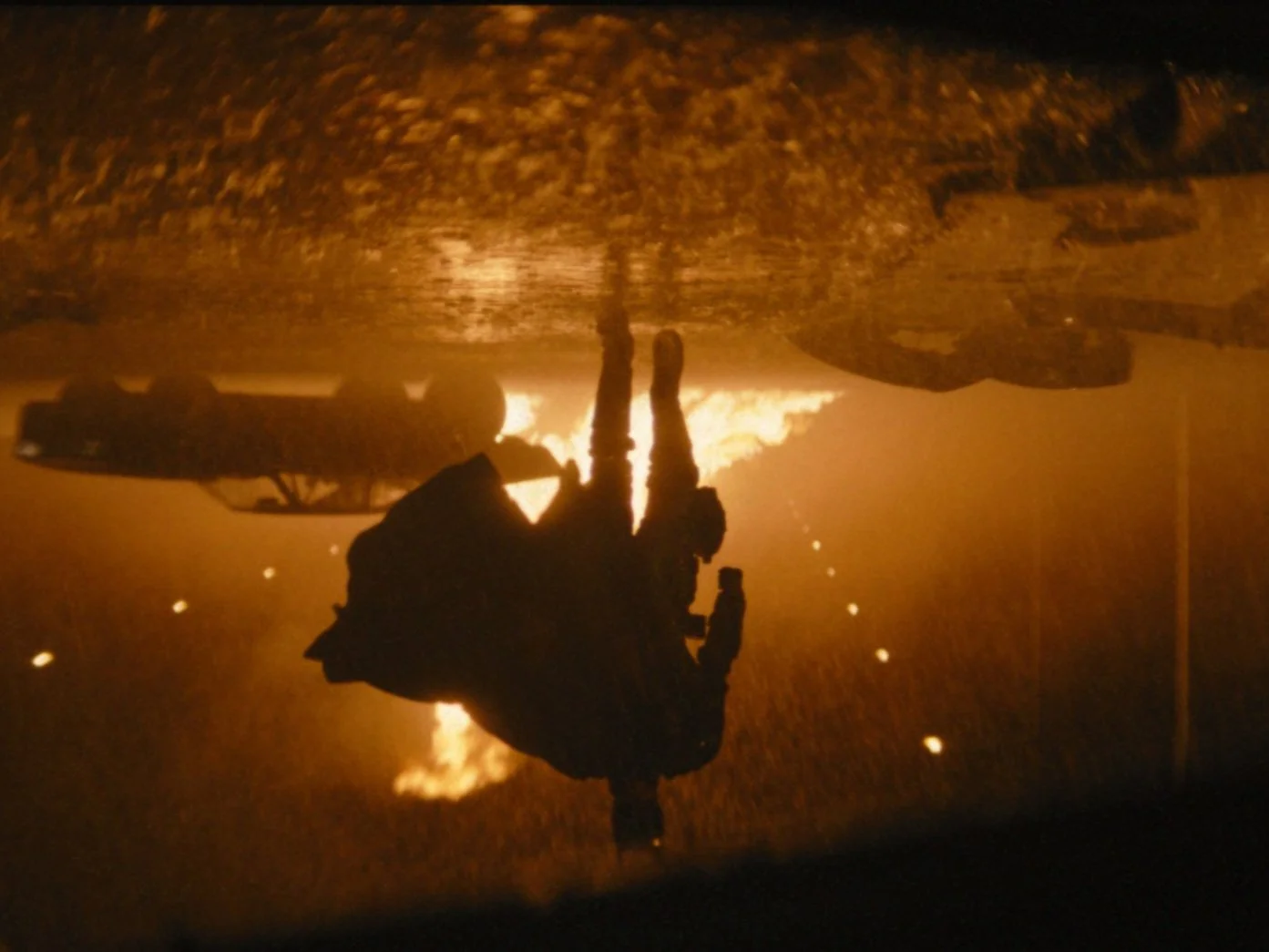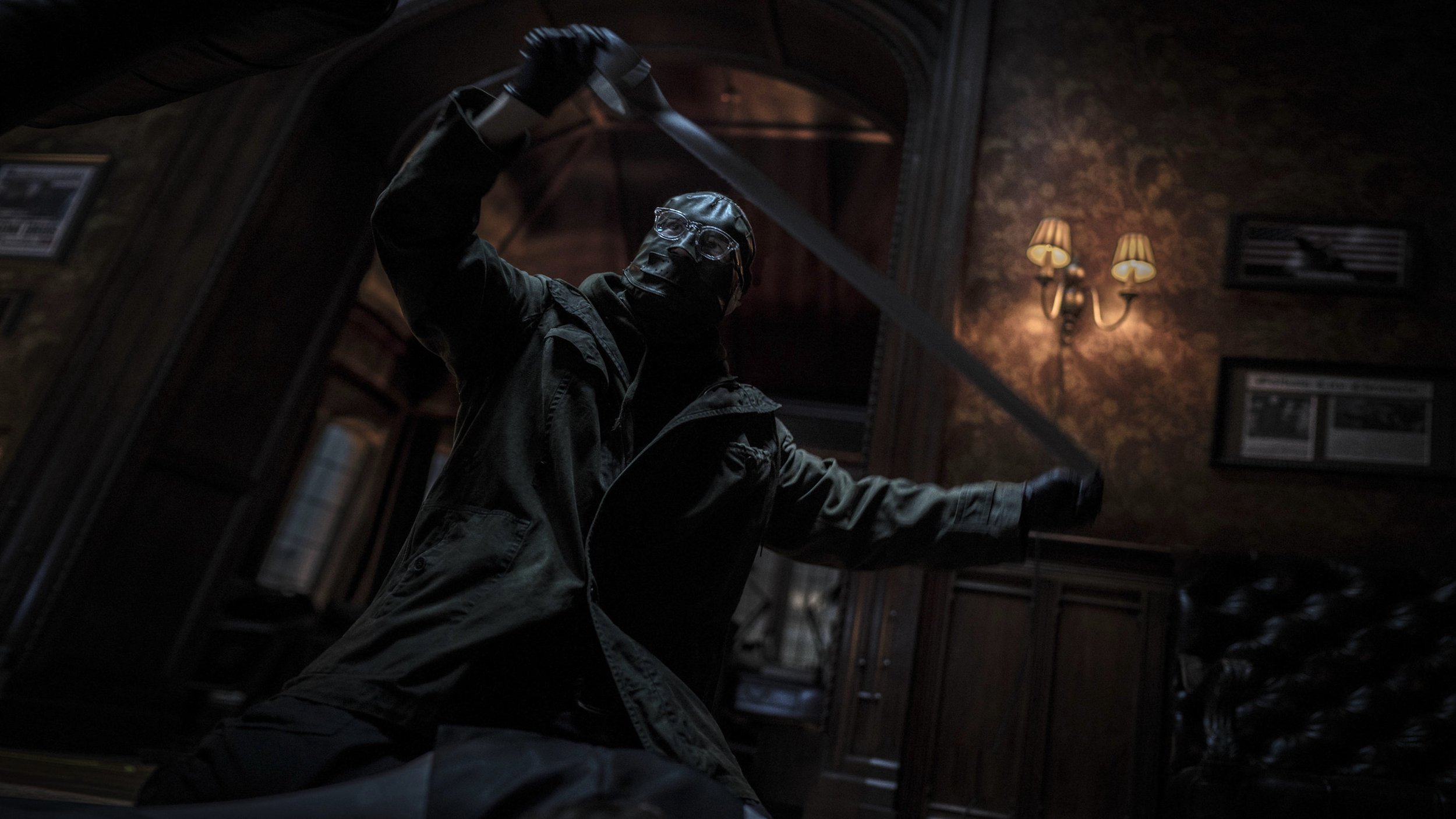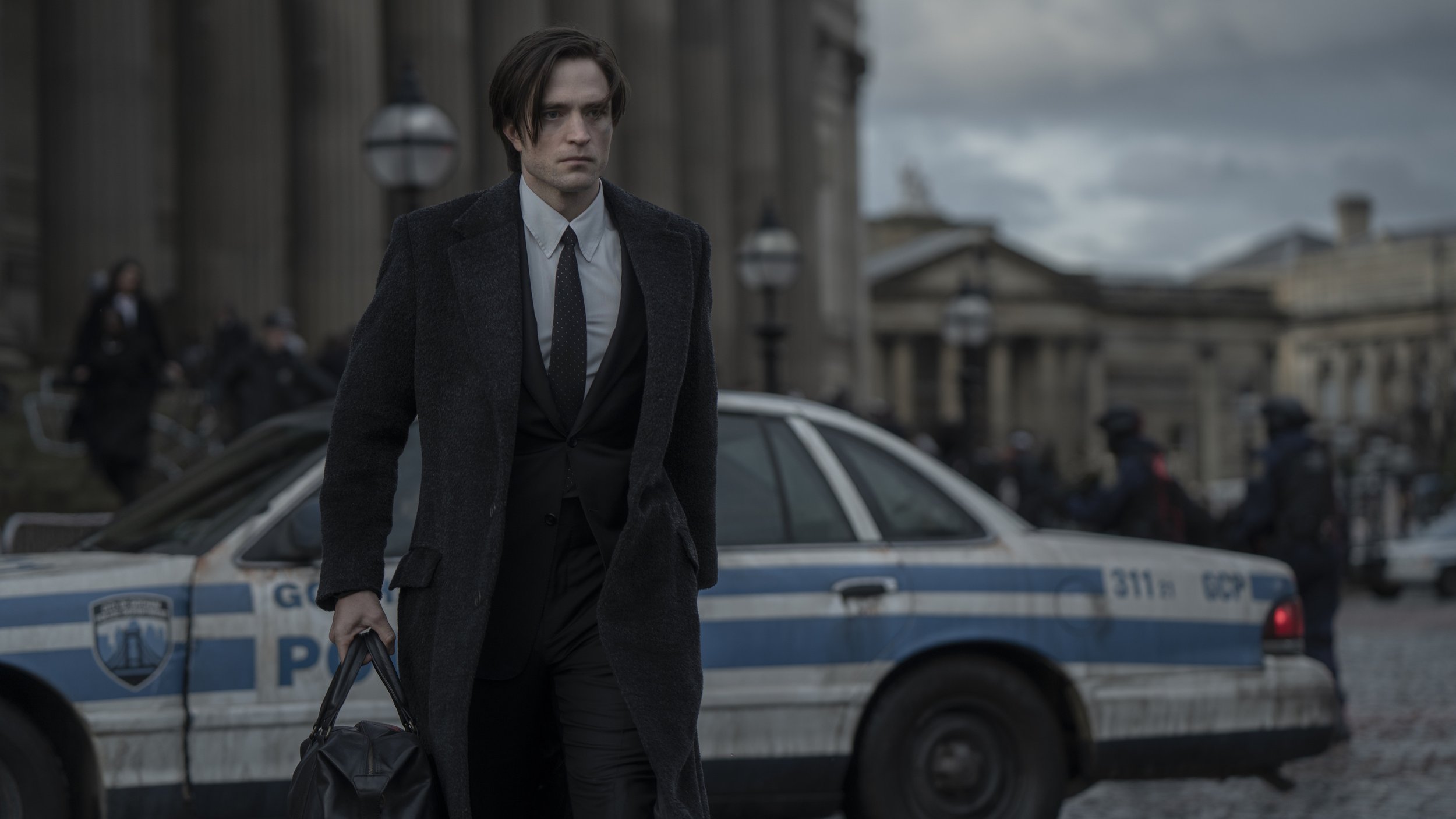The Darkest Knight
Grim, grisly, stylish, dark, and often horrific. Fingers crossed the genre movie with a superhero gumshoe is the next format the Hollywood machine tries to mass produce – at least by Matt Reeves.
the batman
Director: Matt Reeves • Writers: Matt Reeves, Peter Craig, based on DC characters by Bob Kane with Bill Finger
Starring: Robert Pattinson, Zoë Kravitz, Andy Serkis, Jeffrey Wright, John Turturro, Colin Farrell, Peter Sarsgaard, Paul Dano, Jayme Lawson
USA • 2hrs 56mins
Opens Hong Kong Apr 27 • IIB
Grade: A
Does the world need yet another Batman reboot? No. We didn’t need new Spider-Man spins either, but we got them. Same could be said anything from the Stars Trek and Wars ’verses, Halloween could have remained a nugget of the 1970s, and James Bond could have been put to bed years ago. But we got, and keep getting, them all, and that’s not likely to change when movie economics demand maximum viewers/outlets/merchandise be wrung from familiar IP. Bonus points if it can be rolled into [Insert Streamer Name Here]’s content library. Such is the way of the world now.
So if you’re going to reboot something, do it the way Matt Reeves’s The Batman (the twelfth since 1989 including animated films), starring former sparkly vampire Robert Pattinson (the eighth Bruce Wayne/Batman in the same time), does it: with a clear narrative, thematic and aesthetic vision, and damn the torpedoes. Debate will rage as to which Batman is the best for some time to come, but one thing is certain: This Batman appears to be free of any throat issues that make his voice all weird. Hey, we love Christian Bale but c’mon, dude. Ease up.
You’d think that at three hours The Batman would be bloated and unfocused, but that’s as far from reality as you could get. It’s remarkably lean, and wisely dumps the shit we don’t need to see again – namely Thomas and Martha Wayne’s murder and those goddamned pearls hitting the pavement. Moving on.
The Donald Trump presidency and January 6 cast a massive shadow over The Batman, and Reeves and co-writer Peter Craig have spun a new type of Riddler for the post-Trump, post-COVID, social media world. They’ve made this Riddler an angry white guy incel propped up by more firepower than he knows what to do with and a platform on the web, one of the many that are watching the power that they’ve traditionally been entitled to slip away. That vanishing entitlement is at the root of the Riddler’s rage, though Reeves and Craig have opted out of the more misogynist, racist, and homophobic elements that define these losers, and make the corrupt, powerful One Percent the Riddler’s target. So they also walk a fine line between making us “get” the Riddler’s wrath and condemning mass murder. In many ways The Batman is every bit as bleak as 2019’s Joker, which trod similar angry white dude territory, but with less nihilism. In some ways this is an origin story for the “good” Batman who’s going to do right by Gotham. A dawn of justice as it were. See what we did there? Sorry.
The Batman begins (sorry, stopping now) with the hugest in medias res of the year so far. Batman has already been strolling the vigilante beat, Lieutenant Jim Gordon (Jeffrey Wright) is already an ally, and the Bat Signal is a thing. But rather than see it light up the sky and make people feel safe, everyone is afraid. Batman terrifies people, including the mugging victim who pleads, “Please don’t hurt me,” after Bats ostensibly saves him. Well that’s not good.
The story also starts with the corrupt incumbent mayor fighting for re-election getting murdered on Halloween. The killing is the first in a series targetting the players in a Carmine Falcone (John Turturro) drug arrest and a Wayne Foundation endowment. Gordon asks The Batman for a hand and they peel back the layers on case to get to the truth of the Falcone Crime Syndicate, the rot in the GCPD, how Thomas Wayne might be involved, and what the Riddler is trying to prove
Reeves has assembled an absolute murderer’s row of front credit roll talent to realise this iteration of the Dark Knight: Cinematographer Greig Fraser’s filmography includes Dune, Rogue One and Zero Dark Thirty. Michael Giacchino wrote the score, and he’s pretty noted now for the new Star Treks, the Tom Holland Spider-Man trilogy, Up and a pile of other Pixar films. Production designer James Chinlund worked on murky grime-fests Requiem for a Dream and The Fountain for Darren Aronofsky. And veteran editor William Hoy’s first film was spy thriller No Way Out (very ’80s, way underrated), and if you think the guy doesn’t understand pacing – at three hours! – you’re not paying attention to what editors do. Most are Reeves regulars, and they’ve created a visual identity for The Batman that maximises its 1940s film noir elements as much as it does the original DC comics. Narration rarely works. It works here. The rain, the garbage strewn streets, the dark alleys that Batman emerges from, the low lit interiors, the bruising action – Bruce is a rich guy with toys, he’s not invincible – combine for a distinct style that Reeves flirted with in Cloverfield and the last two Planet of the Apes entries and which blossoms here.
So with all the parts at the ready, it’s down to the cast to carry The Batman across the finish line, and Reeves is blessed with a stellar bunch who do just that. Much has been made of Colin Farrell’s Penguin, and as great as he is, it feels as if the Penguin is being set up for a bigger story elsewhere. Like on his own HBO Max series à la Peacemaker. However, Turturro’s Falcone swans around with a kind of menacing untouchability that’s as infuriating as it is recognisable, and Andy Serkis (free of mo-cap gear) is a less sidekick-y Alfred whose relationship with Bruce leads to his third act redemption. That said, in three hours no one could find more for Zoë Kravitz, as Selina Kyle, to do? Really?
But the movie belongs to Pattinson, as an angry, weary Bruce/Batman who’s oblivious to his wealth and at his wit’s end with the shit show that is Gotham City, and Paul Dano as the Riddler. There are few words for how effectively unhinged and terrifying his brand of mania is. Yeah, we’ll say it: This is the best Batman. DEK





